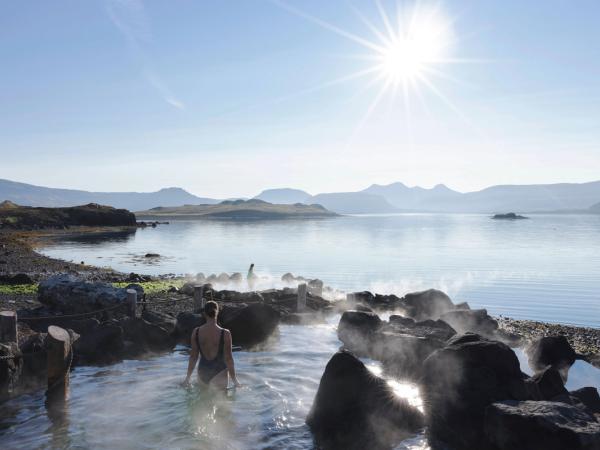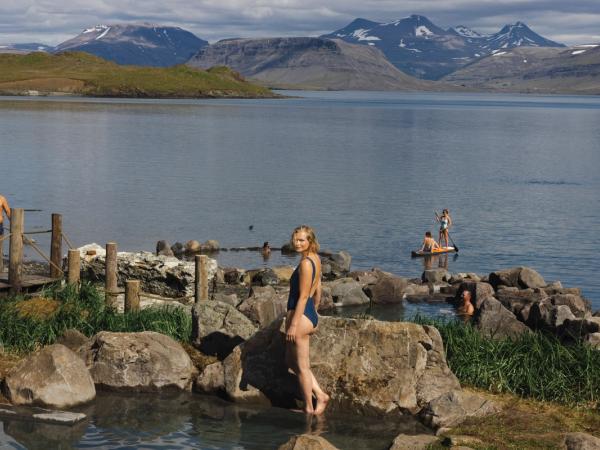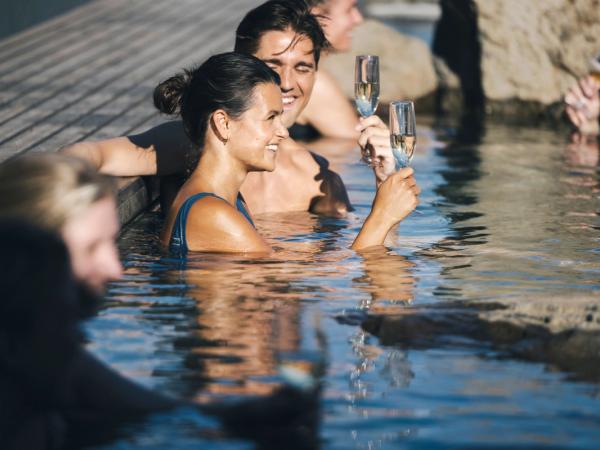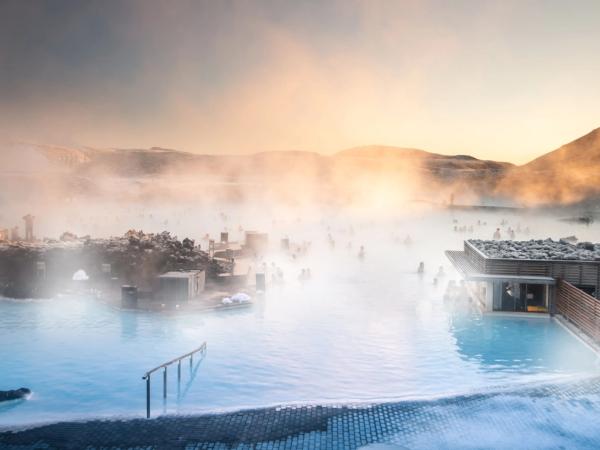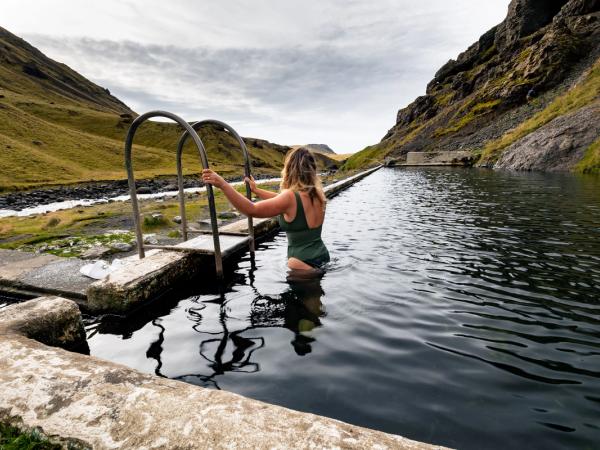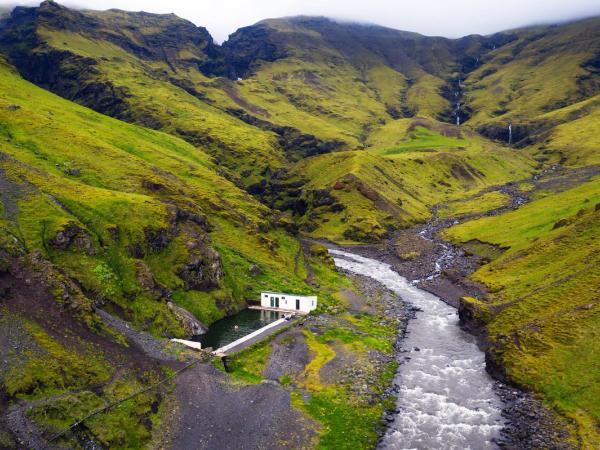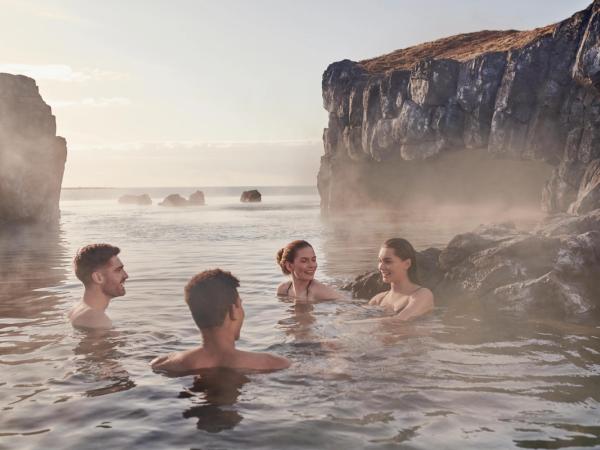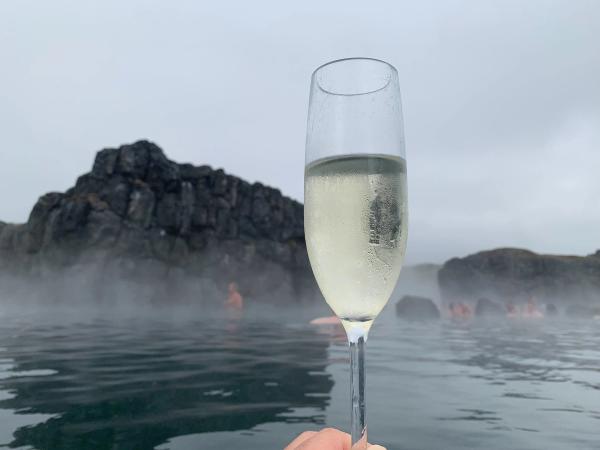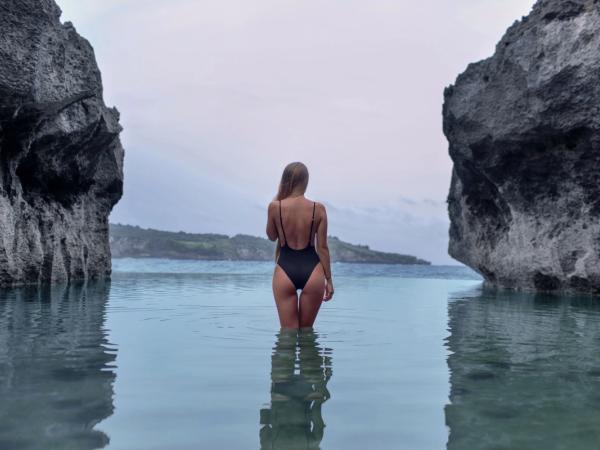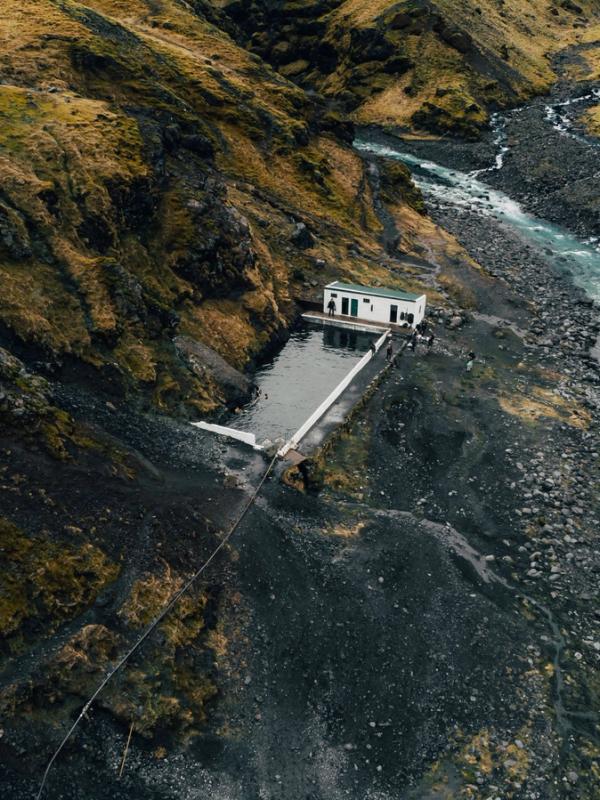
Top Icelandic Hot Springs: Relaxation in the Heart of Iceland
Iceland, the land of fire and ice, is home to some of the most breathtaking natural hot springs in the world. These geothermal wonders offer more than just a warm soak; they provide an unforgettable experience that combines relaxation, rejuvenation, and awe-inspiring scenery. Dive into the world of Iceland’s hot springs and discover why they should be at the top of your must-visit list.
Key Takeaways
- Experience Iceland’s renowned hot springs with unique landscapes and warm, mineral-rich waters.
- Adhere to the dress code and hair/skin protection tips when visiting for an optimal experience.
- Enjoy winter or summer highlights at different times of year. Witness Northern Lights in winter or soak up stunning views in the summer months.
Iceland's Geothermal Wonders: Why Hot Springs are a Must-Visit
Iceland’s hot springs are a result of the country’s unique geological characteristics and the remarkable experiences they offer. Imagine soaking in warm, mineral-rich waters while taking in the majestic beauty of the surrounding landscape.
Delving into the geological factors that lead to these geothermal marvels further elucidates the unique experiences they afford.
Geological Factors
Volcanic activity and tectonic plate movements contribute to the prevalence of scenic hot springs in Iceland, offering you breathtaking views and unique experiences. Some notable hot springs in Iceland include:
- The Blue Lagoon, which was formed in 1976 due to surplus water from a nearby geothermal power plant
- The Secret Lagoon, a natural hot spring located in the Golden Circle area
- Reykjadalur Hot Springs, where you can hike to reach the hot springs and enjoy a relaxing soak in nature
Iceland’s geothermal activity stems from its location at the convergence of two diverging tectonic plates, which leads to significant volcanic activity.
Unique Experiences
Iceland’s hot springs offer more than a mere warm soak; they serve as hubs of relaxation, rejuvenation, and health benefits, all set within stunning natural surroundings. The mineral-rich waters are believed to provide relief from nasal and lung congestion and may even have a positive effect on certain medical conditions, such as psoriasis. At the Blue Lagoon, you can enjoy a swim-up bar and a “mud bar” where they can apply a silica mud mask.
Beyond the waters' restorative properties, the encompassing landscapes present a visual spectacle. Whether it’s the dramatic lava fields of the Blue Lagoon, the serene vistas at Hrunalaug, or the awe-inspiring scenery at Mývatn Nature Baths, Iceland’s hot springs' natural beauty is truly unparalleled.
Top Hot Springs in Iceland
Iceland has over 45 hot springs. Although I'd argue that they're all worth visiting, 18 stand out above the rest.
1. Hvammsvík Hot Springs
Hot springs in raw, untouched nature
Hvammsvík Hot Springs, located in the scenic Hvalfjörður fjord, offers a truly unique hot spring experience. Hvammsvík has eight pools that use geothermal water coming from the ground next to them and cool it down with ice-cold water from the North Atlantic. This natural interaction provides a blend of geothermal warmth and coastal charm.
Surrounded by stunning fjord views and often visited by seals, Hvammsvík provides a peaceful escape just 45 minutes from Reykjavik. With minimalist, modern facilities that complement the natural surroundings, this hot spring offers both tranquility and comfort, making it a must-visit for those seeking a more intimate connection with Iceland’s raw beauty.
The springs are open year-round and offer prime viewing of the Northern Lights in the winter and the Midnight sun in the Summer.
2. Blue Lagoon
Most Popular Hot Spring in Iceland.
The Blue Lagoon is Iceland’s most famous hot spring. It’s not my favorite, but the experience they offer is unparalleled. It was created in the 1970s when the nearby Svartsengi power plant started releasing mineral-rich water into a lava field. The water is milky-blue, full of minerals like silica and algae that are great for your skin and stays warm at 37–40°C. It’s just 42 km from Keflavik Airport and 81 km from Reykjavik, so it’s very easy to reach.
Entry starts at $72 (€69), with more expensive packages that include extras like robes and drinks. You can even stay there if you want. The rooms are extremely expensive, but they are out of this world. You can jump to the lagoon from your doorstep! Make sure to bring your swimsuit and waterproof shoes, though you can rent them if needed. After you’re done soaking, check out the Gunnuhver hot springs, Reykjanes Lighthouse, or other spots in the Reykjanes Peninsula.
3. Mývatn Nature Baths
Mineral-Rich Geothermal Pools in North Iceland.
The Mývatn Nature Baths are a quiet, relaxing spot in North Iceland. They’re near Lake Mývatn and use geothermal water from the Bjarnarflag area. They’re actually known as “The Blue Lagoon of the North.” The water is soft, light on minerals like silica, and stays between 36–40°C. Surrounded by lava fields, it’s a beautiful and peaceful place to unwind.
Tickets cost about $50 (€47), with discounts for kids and seniors. Bring a swimsuit and towel, or rent them on-site if needed. When you’re done, explore nearby attractions like the Dimmuborgir Lava Fields, the Hverfjall Crater, and the amazing Goðafoss Waterfall.
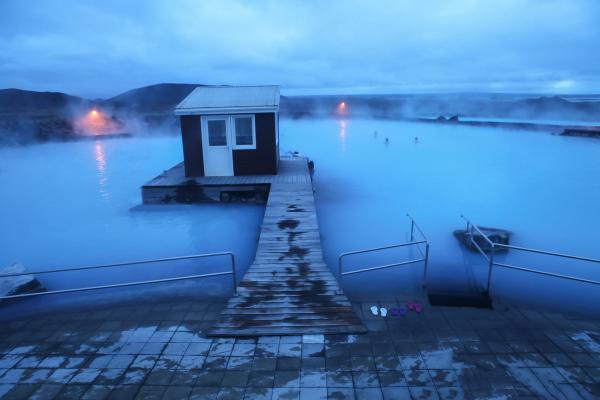
4. Seljavallalaug
Oldest Man-Made Swimming Pools in Iceland.
Seljavallalaug is one of Iceland’s oldest pools, built in 1923 to teach the locals how to swim. It’s hidden in a quiet valley in southern Iceland and is heated by natural hot springs. The pool has a simple, rustic charm, and its remote spot makes it peaceful. The water temperature is not as hot as most hot springs, but it’s always a unique experience. Many people go there in the winter, and the landscape is gorgeous, but the water may be too cold for the weather.
The pool is free to visit, though donations are appreciated to help with upkeep. You’ll need sturdy shoes for the 15–20 minute hike, plus a swimsuit and towel. After swimming, visit the nearby Seljalandsfoss and Skógafoss waterfalls or explore hiking trails around the Eyjafjallajökull volcano.
5. Geosea Sea Baths
Blissful Spa in North Iceland.
The GeoSea Sea Baths in Húsavík sit on a cliff with amazing views of Skjálfandi Bay. They opened in 2018 and use warm seawater that’s naturally heated by geothermal energy. The water is always around 38–39°C, so it’s perfect for relaxing while enjoying the ocean and mountains around you.
It costs about $47 (€43) to get in, and you can rent towels or swimwear if you need to. Húsavík is the best place in Iceland for whale-watching, so you should definitely book a tour while you’re there. You can also check out the Exploration Museum or take a walk on nearby trails for even more stunning views.
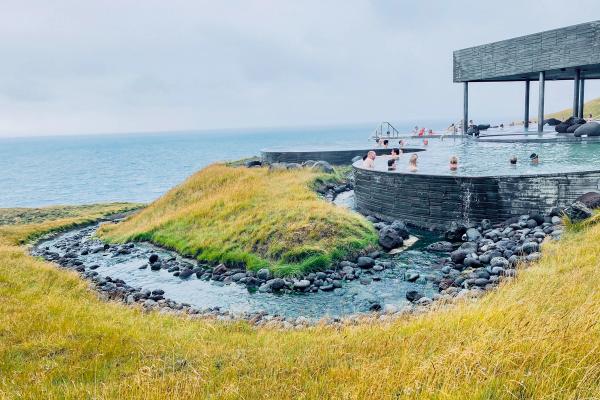
6. Sky Lagoon
Luxurious Geothermal Spa in Southwestern Iceland.
The Sky Lagoon, opened in 2021, is just 7 km from Reykjavik and offers a modern take on Iceland’s geothermal spas. It’s best known for its 75-meter infinity pool, which looks out over the Atlantic Ocean. The “7-Step Ritual” is a big part of the experience, with hot and cold pools, a steam room, and a refreshing scrub.
Tickets start at $91 (they include the full ritual), and most packages include towels. Be sure to bring your swimsuit and toiletries. After your soak, you can explore Reykjavik, visiting spots like Hallgrímskirkja, Harpa Concert Hall, or one of the city’s cozy restaurants or museums. This is a great alternative to the Blue Lagoon because it’s also close to the capital, quieter, and offers a top-notch experience.
7. The Secret Lagoon
The Oldest Natural Hot Spring in Iceland.
The Secret Lagoon in Flúðir is Iceland’s oldest swimming pool, built in 1891. Its water is heated by natural hot springs, so it stays nice and warm at 38–40°C. Small bubbling geysers around the pool make it feel really special.
Tickets cost about $23 (€24), and you’ll need swimwear, towels, and maybe sandals—though rentals are available if you forget something. The lagoon is right near some big Golden Circle attractions like Gullfoss, Geysir, and Þingvellir, so it’s easy to add it to your day of exploring.
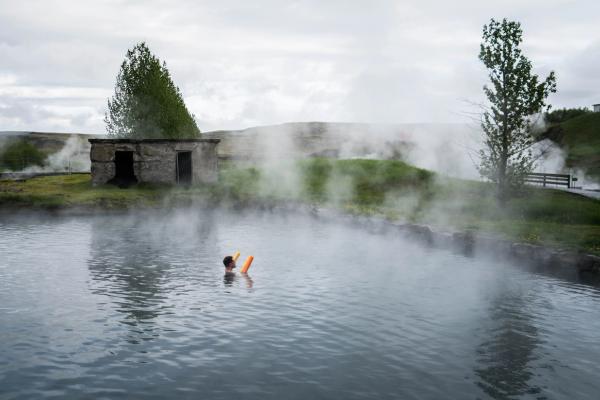
8. Forest Lagoon
One of the newest lagoons in Iceland.
The Forest Lagoon, opened in 2022 near Akureyri, is a peaceful spot surrounded by trees and mountains. It has two warm pools, a cold plunge, and a sauna, and it offers beautiful views of Eyjafjörður fjord and the forest around it. It’s a calm and relaxing place, hard to beat if you want to relax in North Iceland.
Tickets cost about $46 (€45). Bring your swimsuit, towel, and camera to capture the views. After soaking, you can explore Akureyri’s attractions, such as the botanical garden, the church, or the beautiful hiking trails nearby. You can even take a zipline tour there.
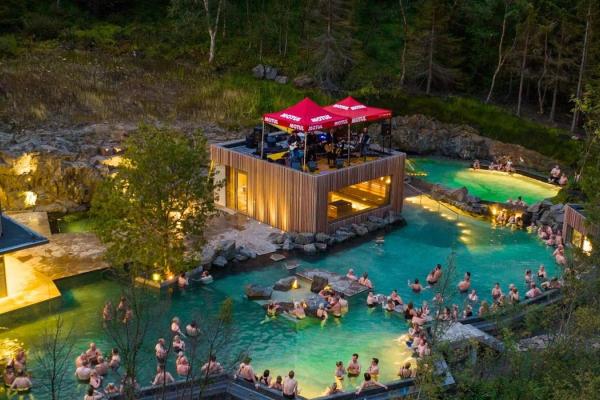
9. Landmannalaugar
Highland Geothermal Oasis in Iceland.
The Landmannalaugar Hot Springs are in Iceland’s colorful highlands, surrounded by bright rhyolite mountains. These natural pools are completely remote. They’re perfect for a soak after exploring the area or hiking the famous Laugavegur Trail.
The springs are free, but you might need to pay for parking or camping. Pack swimwear, hiking gear, and layers because the weather can change quickly. The mountains and lava fields make this spot great for photos and a must-visit for anyone who loves adventure.
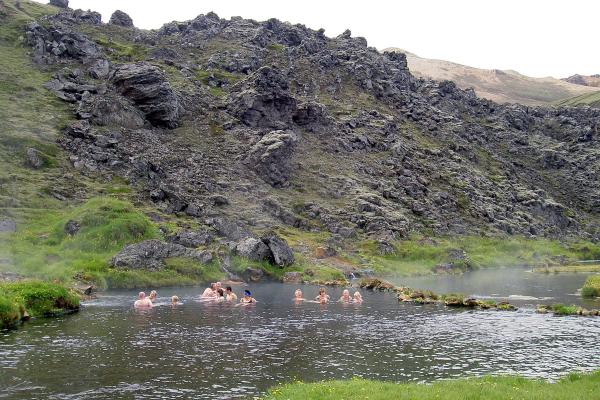
10. Hrunalaug
Small Natural Hot Springs in Southern Iceland.
Hrunalaug is a small hot spring near Flúðir, ideal if you want a quiet, natural place to relax. It’s fed by geothermal water and has a simple, peaceful feel. Its lack of big facilities makes it even more charming.
There is no fee to visit, but donations help maintain it. Since the area is outdoors, bring a swimsuit, towel, and waterproof shoes. This is another good spot to add to your Golden Circle itinerary.
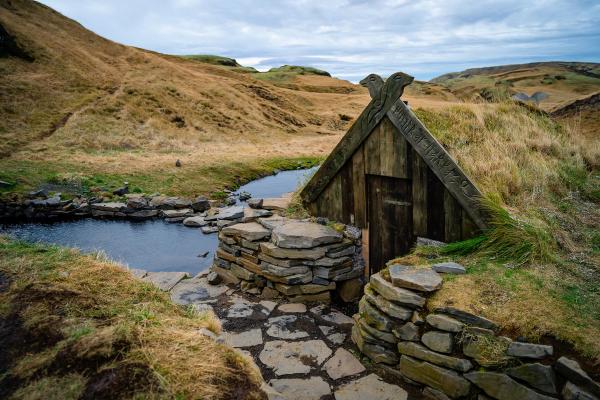
11. Krossneslaug
Man-Made Swimming Pool in North Iceland.
Krossneslaug is a small geothermal pool in the remote Westfjords, right next to the North Atlantic Ocean. The warm water and crashing waves make it one of the most incredible spots to relax in Iceland. It’s quiet and peaceful, and you feel like you’re on the edge of the world.
Entry is just €5, so it’s affordable, too. Bring your swimsuit, towel, and warm clothes, as it can get chilly out there. After your soak, drive along the coastal roads for amazing views, visit the Drangajökull glacier, or just enjoy the beautiful solitude of the Westfjords.
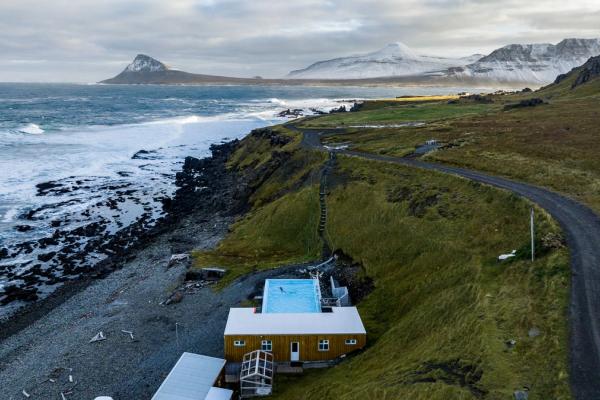
12. Vok Baths
Hot Pool in East Iceland
The Vök Baths near Egilsstaðir offer something special with their floating geothermal pools on Lake Urriðavatn. It's hands down, the best hot spring in East Iceland. The water is warm, mineral-rich, and even safe to drink. You can try herbal teas made with the same water while soaking in the pools. A cool thing to do here is to jump to the lake, which is freezing cold, and then return to the pools for a nice hot-cold-hot contrast. It’s relatively new, so it’s not a super busy spot.
Tickets start at $49 (€48), with private bath options if you want a more exclusive experience. Don’t forget your swimsuit, towel, and toiletries, although rentals are available if needed. After your bath, check out Hengifoss waterfall, the Stórurð boulder fields, or the stunning fjords nearby for more East Iceland adventures.

13. Reykjadalur Hot Springs
A hot river in South Iceland
Reykjadalur, or “Steam Valley,” is a geothermal area where hot underground water mixes with a cool river, creating a warm stream that’s perfect for a relaxing bath. It’s just a 40-minute drive from Reykjavík, near the town of Hveragerði in South Iceland. The hike to reach the hot springs is about 3 kilometers each way. Along the trail, you’ll pass steaming vents and bubbling mud pools. The water gets warmer the farther upstream you go, and the views of the mountains and valleys around you are amazing.
Bathing in the springs is completely free. Be sure to wear sturdy hiking shoes and dress in layers because the weather can change quickly. Pack a swimsuit, towel, water, and snacks since there aren’t any facilities on the trail. After enjoying the hot springs, you can check out Hveragerði’s geothermal attractions, stop by a local café, or visit more natural spots in South Iceland.
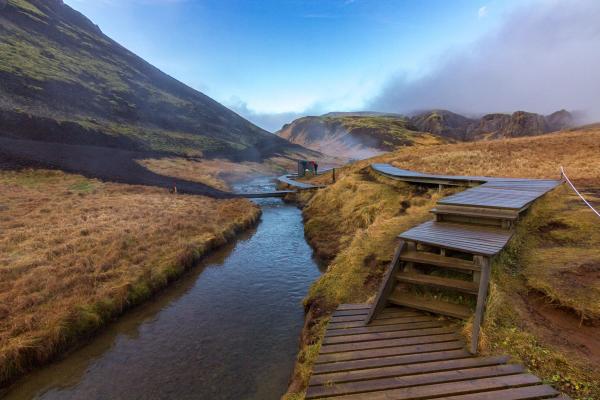
14. Hoffell Hot Tubs
Man-made hot tubs in southeast Iceland
Hoffell Hot Tubs are about 10 km north of Höfn in southeast Iceland. They’re a peaceful spot with views of the Hoffellsjökull Glacier. There are five man-made tubs with naturally heated water at different temperatures. If you stay at the Glacier World – Hoffell Guesthouse, you can use the tubs for free. Otherwise, it costs 2,000 ISK per adult.
The place has basic facilities like showers and changing rooms. It usually closes in November and reopens in spring.
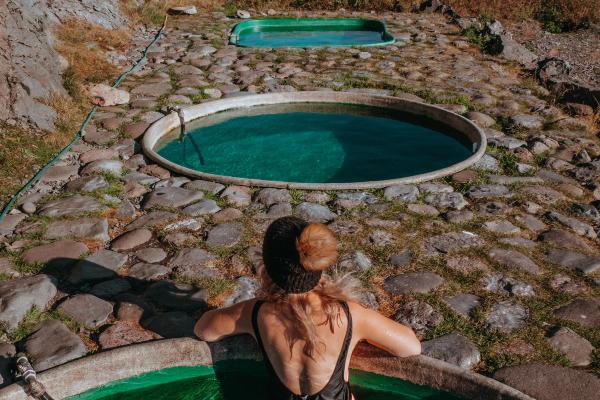
15. Laugarvatn Fontana
Man-made pools in the Golden Circle
Laugarvatn Fontana is a relaxing stop along the Golden Circle. You’ll find outdoor pools with temperatures between 36°C and 40°C, natural steam rooms over hot springs, and the chance to cool off in Laugarvatn Lake.
A highlight is the geothermal bakery, where you can try rye bread baked underground. The spa is open daily from 11 AM to 9 PM. Entry costs 5,490 ISK ($39) for adults, 3,490 ISK ($25) for teens (10–16 years), and is free for kids under 10.
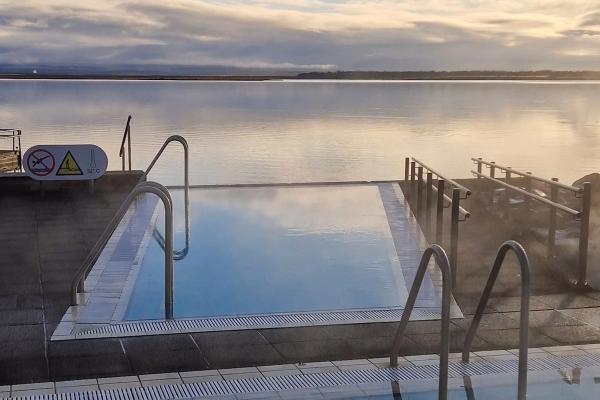
16. Hellulaug Hot Spring
Natural hot springs in the Westfjords
Hellulaug is a natural hot spring in the Westfjords, located in the Vatnsfjörður Nature Reserve. The pool is about 3–4 meters wide and around 60 cm deep, and the water stays at a comfortable 38°C year-round.
There are no buildings or changing facilities. It really doesn't get more basic than this, but the feeling of soaking in the middle of nowhere with the ocean views is hard to explain. It’s free and open all year.
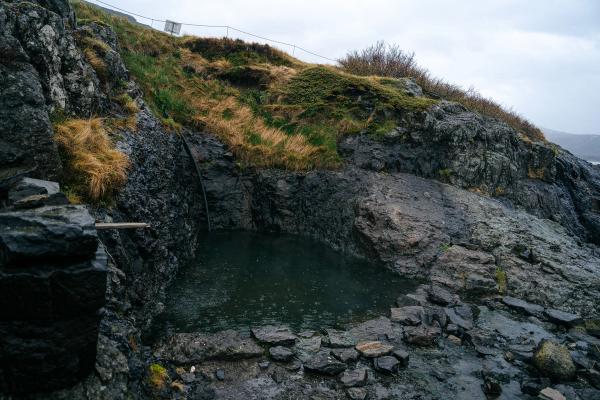
17. Krauma Spa
Spa in West Iceland
Krauma Spa is in Reykholt, Borgarfjörður. It uses hot water from Deildartunguhver, Europe’s most powerful hot spring. The spa has five warm pools, a cold tub with glacier water, two steam baths, and a cozy relaxation room.
The spa also has a restaurant with local food. Krauma is open daily—11 AM to 9 PM in summer and 11 AM to 8 PM in winter. Entry costs 6,800 ISK ($48.5) for adults, 3,400 ISK ($24) for teens (13–16 years), and kids under 13 get in free.
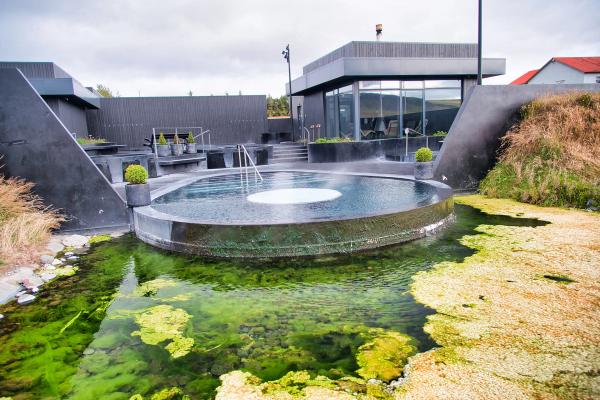
18. Grettir's Pool (Grettislaug)
Natural pool in North Iceland
Grettir's Pool is near Sauðárkrókur in North Iceland. It’s named after Grettir Ásmundarson, a figure from Icelandic sagas who supposedly bathed here. The pool is surrounded by cliffs and scenic views. It’s about a two-hour drive from Akureyri or four hours from Reykjavik. You can visit year-round, but summer is best for easier road conditions.
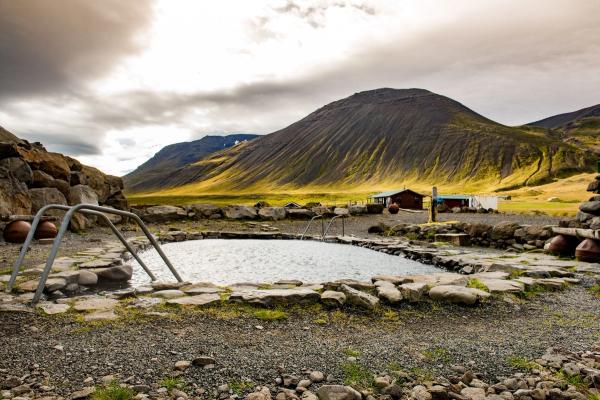
Hot Springs Etiquette and Tips for Visitors
While visiting Iceland’s hot springs, maintaining awareness of etiquette and tips is pivotal to ensuring a pleasant and respectful experience for everyone.
This section will delve into aspects like dress code, nudity, and hair and skin protection, equipping you to maximize your experience at these geothermal wonders.
Dress Code and Nudity
While the dress code and nudity policy for hot springs in Iceland varies depending on the particular hot spring, generally, swimsuits are required, and nudity is not permitted in public areas.
Be sure to pack a swimsuit and adhere to any specific rules outlined by the hot spring you’re visiting to ensure a comfortable and enjoyable experience at hot pools for everyone.
Hair and Skin Protection
To protect hair and skin from the mineral-rich hot water, it is recommended to tie hair up and use conditioner or oil before entering the hot springs. This will help to prevent any potential damage to your hair and skin, allowing you to fully enjoy the healing properties of the warm water without any concerns.
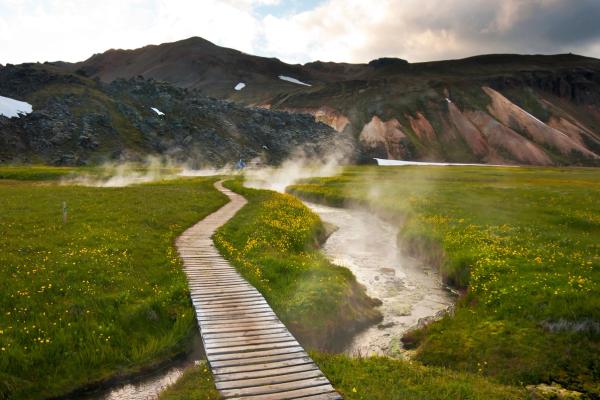
Seasonal Highlights: When to Visit Iceland's Hot Springs
Iceland’s hot springs offer year-round enjoyment, with each season presenting distinct experiences and highlights. This section will guide you through the optimal times to visit, catering to preferences for a winter wonderland or a summer soak.
Winter Wonderland
Visiting Iceland’s hot springs during the winter months offers the chance to witness the stunning Northern Lights and enjoy a snowy landscape.
The contrast of the warm, geothermal waters against the cold, crisp air creates a truly magical experience, making winter an ideal time to visit Iceland’s hot springs.
Summer Soak
During the summer months, Iceland enjoys warmer weather, longer daylight hours, and more accessible remote hot springs.
This makes it the perfect time to explore the country’s geothermal wonders, with the added bonus of being able to enjoy other outdoor activities and attractions during your visit.
Summary
Iceland’s hot springs are a must-visit for anyone looking to experience the country’s unique geothermal wonders and breathtaking natural beauty.
From the famous Blue Lagoon to lesser-known gems like Hrunalaug, there’s a hot spring for every traveler’s taste.
Just remember to follow the etiquette and tips provided to ensure a respectful and enjoyable experience for all. So, why wait? Immerse yourself in the healing waters of Iceland’s hot springs and create memories that will last a lifetime.

